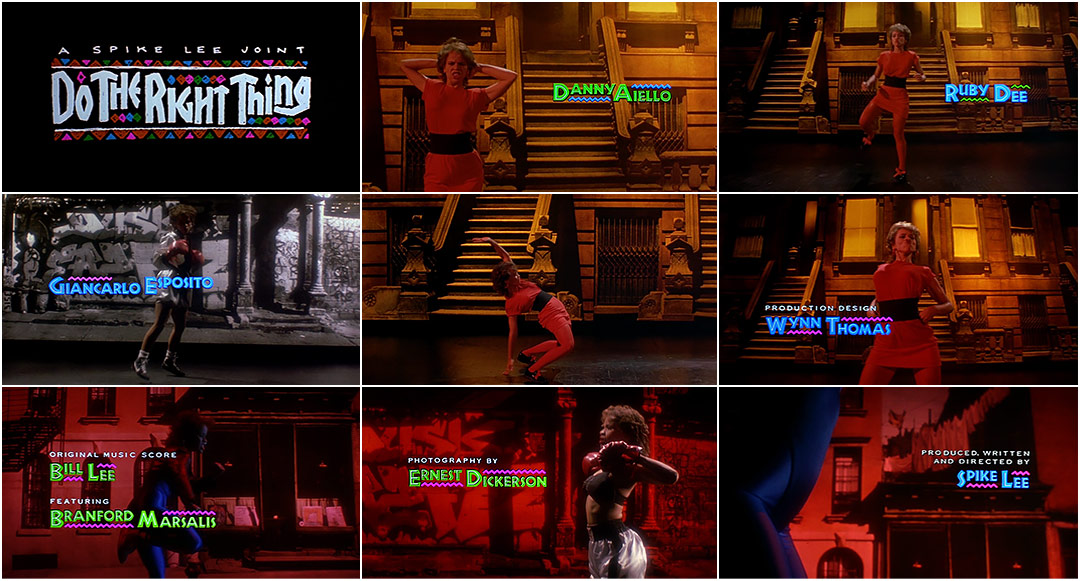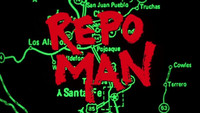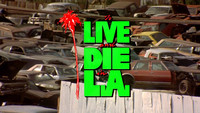"Eight hours of doing the same dance. I developed tennis elbow from throwing those punches," recalled Rosie Perez in a 2013 video interview.
But those punches that exhausted Perez, who made her feature film debut in Do The Right Thing, are one of several reasons that Spike Lee's opening title sequence is both a classic sequence and an important moment in the history of film. In this opening, film newcomer Perez embodies the soul of Do The Right Thing – the embattled intersection of history, music, cinema, and racial tension – the simmering heat of it.
"Everybody in that theater already knew who Rosie Perez was. ‘It's that chick from Soul Train,' I heard a voice behind me say," wrote film critic Odie Henderson about the first time he saw the opening of Do the Right Thing.
Soul Train main titles from the mid-1980s featuring Rosie Perez around the 1:15 mark
For moviegoers who weren't familiar with Perez and Soul Train, the West Coast dance show, Spike Lee’s opening sequence provided a good, long look at her ferocity. After all, she was the one who introduced the show to that sort of brazen East Coast style of hip-hop dancing. In her militant moves and jabbing fists, she is dynamite incarnate.

Rosie Perez dancing in the opening of Do The Right Thing. See more of Rosie's dancing in this supercut of scenes from Soul Train.
The opening kicks off with Branford Marsalis's tenor sax rendition of James Weldon Johnson's "Lift Every Voice and Sing," originally a poem from 1900 which eventually came to be adopted as an anthem for the NAACP. The clip of the song is brief and it fades away as the screen goes black – a small nod to film overtures of old. The title sequence then slides in with the opening bars of “Fight the Power,” introducing audiences to Perez and the sounds of Public Enemy. An assertive Long Island rap group making great waves in hip-hop, their second studio album It Takes a Nation of Millions to Hold Us Back was one of 1988's most critically acclaimed. Lee became a fan of its second track "Bring the Noise” and wanted Public Enemy to write and record an anthemic original track for his movie along those lines.
"Spike said that he was doing a film that would reflect what was happening in New York City at the time and he wanted a song that would signify that theme," said Public Enemy frontman Chuck D.
Like It Takes a Nation, Do the Right Thing’s intention was to voice the frustrations of a myriad of marginalized people facing police brutality, gentrification, and racism in Bensonhurst and Howard Beach, as well as concerns about then-New York Mayor Ed Koch. The resulting theme, "Fight the Power," was the perfect opener for the provocative subject matter Lee tackled head-on.
Public Enemy “Fight The Power” music video directed by Spike Lee
Combined with Perez's shadowboxing, powerful dancing, and amusing Elvis Presley impression (right when Chuck D and Flavor Flav launch into a tirade about Elvis and cultural appropriation), the song set the tone for a film that did not flinch from its purpose. Almost immediately, "Fight the Power" garnered frequent airplay on Yo! MTV Raps, catapulting Public Enemy from mere critical acclaim to resounding mainstream success.
The film's score was composed by Lee’s father, Bill Lee, a jazz bassist and composer whose sensibilities influenced many of his early films, including the jazz-backed She’s Gotta Have It. Do the Right Thing marked a musical shift for the filmmaker and saw him embrace hip-hop, which did much to legitimize it as an art form in mainstream cinema. "There had been hip-hop films before then. But this is the one that really utilized hip-hop in the way that spoke to where it lived in the world," said cultural critic Mark Anthony Neal.* It spurred other filmmakers to take it more seriously and paved the way for producers like Eric B and Dr. Dre to contribute equally hard-hitting original themes to films like Juice and Deep Cover, both major motion pictures in 1992.
*Read NPR's 2009 story, 20 Years Since Spike Lee's Do The Right Thing, featuring a round-table discussion of the film.
Now, of course, it’s hard to imagine Do the Right Thing’s titles as anything other than what they are, but "Fight the Power" and Perez’s dancing weren’t Lee's first ideas. When he first began plotting the intro to what would no doubt be a contentious film, he was actually thinking in much lighter terms. His early ideas and contenders for the title theme are detailed in Lee's 1989 book about the making of the film, which includes journal entries from the 1987-88 production period. In one entry, he discusses using stills and chalk in the title sequence:
I want to stay away from still photographs for the opening credits. I used stills in She's Gotta Have It and School Daze. I have been thinking about credits written in white chalk on a city street. Black asphalt. We should shoot them with a Louma crane.
She's Gotta Have It (1986) main titles designed by Wayne Salazar, Alan Hostetter, and Michael Bruce
A month later, he envisions Perez dancing to the Northern Soul classic “Cool Jerk”:
I've been listening to "Cool Jerk" by the Capitols. It's a real classic, fast and upbeat, and it brings to mind summer in the city. This may be the song for the opening credits sequence. I see Rosie Perez dancing to "Cool Jerk" all over Brooklyn at the first heat of dawn. Rosie doing the Cool Jerk on the Brooklyn Bridge, on the promenade, and on various rooftops.
The Capitols “Cool Jerk”
Ultimately, Lee's decision for the titles was to forgo the white chalk, the crane, the actual Brooklyn locations, and the lighter side of summer that "Cool Jerk" represented. Instead, he opted for a colourful, animated typeface by former Columbia Records album art designer Art Sims paired with titles designed by then-New York-based duo Balsmeyer & Everett and focused on the simmering tension and energy in Bedford-Stuyvesant – on a soundstage.

Examples of album artwork by Art Sims
As Cinematographer Ernest Dickerson recalled in an audio commentary track on the film's Criterion Collection laserdisc release, the crew had to be creative on that soundstage due to the low budget:
The opening sequence was definitely an attempt to do something very stylized, to get the feel of Brooklyn, Spike being a big fan of Hollywood musicals. And this is what we wanted to do with this: we wanted to have Rosie dancing in front of rear-screen projection showing scenes of the Brooklyn streets, and they would change behind her as they went. Well, economics came into play, and we couldn't afford rear-screen projection, so we went with big translight backings. They're big, they're also like gigantic slides, and we hung them in a studio. Spike wanted to find ways of really stylizing it because the translights were pretty plain. I think some of them were black and white, actually. I just had banks of colored lights and I had my gaffer on the dimmer board. He worked out lighting patterns and color schemes on the background and on the front on Rosie. It was my first chance to actually see Rosie dance. I had heard what a fabulous dancer she was. Spike kept telling me. I had never really seen her in action until this day.
It should come as no surprise that Lee is a fan of Hollywood musicals. His inspiration for opening Do the Right Thing with footage of Perez dancing on a soundstage came from the 1963 film Bye Bye Birdie, and Ann-Margret's famous opening number therein. He details his early exposure to film through his mother on his 2013 Kickstarter project page, writing:
My Father hated TV and MOVIES, so I became my Mother's Movie Date. She loved Movies and that love was passed onto me, her oldest child.
I remember my Mom taking me to see BYE BYE BIRDIE at Radio City Music Hall. And years later that came back to me. How? The Opening Credit Sequence in my third Joint DO THE RIGHT THING
Bye Bye Birdie (1963) main titles
But while Ann-Margret looks delighted as she belts out her musical farewell, Perez looks anything but. She is hard and strong and determined. She never smiles. This is because much of her on-screen anger was real. The shoot for Do The Right Thing's opening took place on a soundstage in Brooklyn which had a concrete floor, and Lee insisted on numerous takes, encouraging Perez to continuously bring more intensity to her dancing. Her back went out, she injured her knees. By the time they wrapped, she was using crutches. In a 2011 interview, Perez talked about the shoot:
I remember telling Spike that I can't do it again, and he was like, "We're going again." He kept telling me to bring more passion and anger to the dance. At one point, I looked over and saw him sitting there, and I was so pissed off, my nostrils just flared. I kept getting more and more exhausted and angry and I was almost on the verge of tears. It's funny, because many people have told me that one of their favorite parts of the scene was when I put my hands on my hips, grinded down towards the floor, and looked to the side. They would say how sexy it was. Of course, I wasn't trying to be sexy – I was just so angry that I couldn't even look at the camera. It wasn't until I saw the movie that I understood what he was doing. I think the emotional part of the sequence is brilliant, but as a dancer, I still have a problem watching it, because I thought my dancing was horrible as a result of how tired I was.
This was Perez's most important contribution and Lee's greatest achievement: translating frustration and anger into fierce physicality and forcing viewers to pause, to feel that heat. Her dance helped the opening become both a turning point for hip-hop in film and a triumph of title design. The raw emotion established in the opening titles courses throughout the film, rousing audiences, igniting controversy, and raising questions about race and social structure – many of which, sadly, still resonate today.
Director: Spike Lee
Main and End Titles Designed and Produced by: Balsmeyer & Everett, Inc.
“Do the Right Thing” Logotype by: Art Sims/11:24 Design & Advertising
Cinematography: Ernest Dickerson
Dancer and Choreographer: Rosie Perez
Music:
"Fight The Power" by Public Enemy
"Lift Every Voice and Sing" by James Weldon Johnson, performed by Branford Marsalis and arranged by Bill Lee










